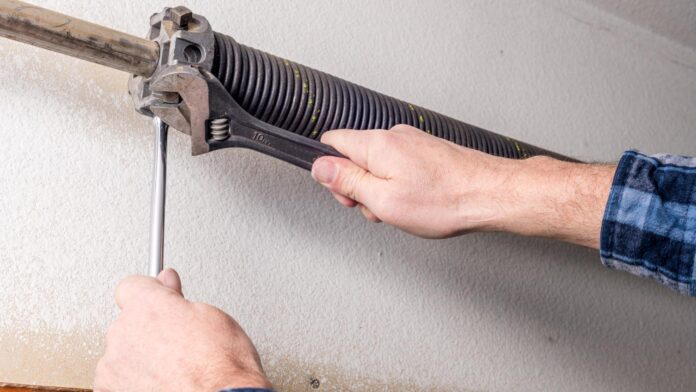If you’ve ever had to replace a garage door spring, you know that there are different types of springs available each with its own advantages and disadvantages. But what exactly is the difference between them? How do they work and how are they different from each other?
In this blog post, we’ll take a look at the two of the most common types of garage door springs so that you can make an informed decision when it comes time to replace your springs. Read on till the end to know all about them. Let’s go!
Torsion Springs
Torsion springs are the most common type of spring used in garage doors. These springs are designed to balance the weight of your door so that it can be opened and closed with ease. Torsion springs unlike extension springs employ torque to achieve their purpose. Therefore, when the force of opening or shutting the garage door is exerted (either manually or with a motor), the coil will twist and coil itself on the shaft. Torsion springs are available in a wide range of lengths and diameters; the one you need to utilize for your garage door will depend on the door’s overall dimensions and the opening it has.
Torsion springs are installed above the garage door opening, and they typically last between 5 and 10 years before they need to be replaced. If you have a torsion spring system, it’s important to have it inspected by a professional at least once per year so that any potential problems can be caught early. Replacing a torsion spring can be dangerous because these springs very are robust, so it’s best left to a professional.
Extension Springs
Extension springs can typically be found in the vertical and horizontal upper tracks located on either side of the garage door. These are typically utilized whenever there is insufficient headroom, rendering the installation of rear torsion springs impossible. When the springs are extended in order to open the garage door, a counterbalance is created that helps to maintain the door’s stability. More force is applied to the extension springs if the door is allowed to remain open (which causes the springs to extend more).
Due to the significant amount of energy exerted by these heavy-duty garage springs, the installation of these springs must incorporate appropriate safety precautions. Every extension spring comes with its very own safety cable. In the event that there is a malfunction and the spring breaks free, the safety cord will prevent it from shooting freely, which would otherwise pose a significant risk to the user. Homeowners are additionally protected by the safety cable in the event that a cable or bracket breaks.
Bottom line
There are two major main types of garage door springs: torsion, and extension. All these types of springs counterbalance the weight of your garage door so that it can be opened and closed with ease; however, they each have their own unique pros and cons. Before making a purchase make sure to write down what your priorities are in order to make the right decision. And after you get your garage door springs installed make sure to get them checked by a professional each year, so their life span is extended and you can get a heads up if they need replacement.











